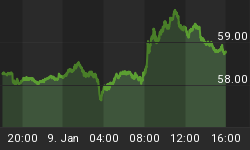The SP500 is down 3.5% in November, a month where we are told the bulls always do well, and the index is down 7.2% since the announcement of QE3 to infinity, which was another can't miss proposition for market participants. Yes, investors continue to hope and hope and hope that the next market intervention will be coming soon. The Federal Reserve is on the sidelines for now, and our law makers are diligently working on a "solution" that in all likelihood will kick the can down the road even more. What would you expect them to do? So once again, the market will rise on the expectation that a deal will be done in Washington. After all in this singular issue world of ours, the only thing holding the market back is the fiscal cliff and Washington's inability to deal with it. Isn't that the story you hear? I am sure it is way more complicated than that, but how else can the media explain a drop in the markets? Of course, no one is asking why QE3 has failed to lift the markets or why November, normally a bullish month, is so punk. We can always hope that the next can kicking exercise will be the one, but I always like to think that a market that doesn't do what you expect should put you on high alert.
From a sentiment perspective, the indicators are closer to turning bearish (i.e., bull signal) than last week, and this is what you would expect when you get lower prices (i.e., more bears). But the rubber band is far from being stretched, so any bottom forged at this level that leads to a rally will fail miserably. These are the kinds of patterns seen at market tops. For now, it is Thanksgiving week, and the market "always" goes up during Thanksgiving week. No reason for lawmakers to ruin a perfectly good holiday.
The "Dumb Money" indicator (see figure 1) looks for extremes in the data from 4 different groups of investors who historically have been wrong on the market: 1) Investors Intelligence; 2) MarketVane; 3) American Association of Individual Investors; and 4) the put call ratio. This indicator is neutral, and just below the extremely bullish level. Bullish sentiment is unwinding.
Figure 1. "Dumb Money"/ weekly
Figure 2 is a weekly chart of the SP500 with the InsiderScore "entire market" value in the lower panel. From the InsiderScore weekly report: "Market-wide sentiment has improved in recent days as buyers have begun to emerge across various sectors and market-cap groups. While our top-line tracking metrics show only a modest moderation on a weekly basis, the trending below the data has been more positive. The main sources of positive sentiment are the Russell 2000 and the Energy and Financial sectors."
Figure 2. InsiderScore "Entire Market" value/ weekly
Figure 3 is a weekly chart of the SP500. The indicator in the lower panel measures all the assets in the Rydex bullish oriented equity funds divided by the sum of assets in the bullish oriented equity funds plus the assets in the bearish oriented equity funds. When the indicator is green, the value is low and there is fear in the market; this is where market bottoms are forged. When the indicator is red, there is complacency in the market. There are too many bulls and this is when market advances stall. Currently, the value of the indicator is 63.93%. Values less than 50% are associated with market bottoms. Values greater than 58% are associated with market tops. It should be noted that the market topped out in 2011 with this indicator between 70% and 72%.
Figure 3. Rydex Total Bull v. Total Bear/ weekly
TheTechnicalTake offers a FREE e-newsletter: HERE
Visit TheTechnicalTake website: HERE















